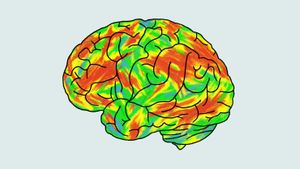A robot-assisted method using high-intensity focused ultrasound (HIFU) effectively generates spherical thermal lesions for non-invasive tumor treatment.
Researchers have pioneered a new approach to high-intensity focused ultrasound (HIFU) therapy, aiming to refine the geometric precision of thermal lesions produced during treatment. This breakthrough technique primarily focuses on generating nearly spherical lesions, which contrasts with conventional methods resulting in elongated, cigar-shaped formations.
Led by Joonho Seo and his team at the Korea Institute of Machinery and Materials, the study revealed how specific motion patterns applied to HIFU can influence the creation of thermal lesions. Using robotic assistance, the researchers employed the Gaussian random motion (GRM) model, which proved to produce lesions with enhanced sphericity, averaging 0.85, compared to just 0.33 for the traditional fixed-focus method.
HIFU therapy is gaining traction as a non-invasive treatment option, celebrated for its ability to target tumors without damaging adjacent healthy tissue. Despite its advantages, conventional HIFU methods have limitations due to the shapes of lesions created during the process. Seo's team sought to address this, aiming to improve precision, particularly necessary for small and spherical tumors.
By manipulating the movement of the HIFU transducer via robotic arms, the research team was able to test various motion models, concluding GRM offered the optimal approach. The experiments were conducted on bovine serum albumin (BSA) gels, which provided clear visual representations of the thermal lesion changes over time.
"We expect this approach to be applicable for non-invasive HIFU treatments of small, spherical tumors," said the authors of the article, emphasizing the method's potential for clinical applications.
The results showcased GRM's capability to disperse heat more evenly within the tissue, thereby achieving the sought-after spherical shapes. The experimental data validates the hypothesis, indicating significant promise for treating small tumors, as early detection becomes more prevalent with advancements in medical imaging.
Yet, the study highlights the importance of testing this method on actual human tissues to fully establish its clinical efficacy. The researchers also identified variables impacting the effectiveness of HIFU, like the degassing of tissues and optimal ablation times.
Through simulating and experimentally addressing the conditions necessary for spherical lesion formation, Seo's team has laid the groundwork for improved HIFU technologies. This innovation emphasizes the importance of exploring mechanical solutions to refine thermal ablation methods aimed at enhancing patient outcomes.
With continuous advancements anticipated, this research may well mark a pivotal step toward more effective treatment strategies for non-invasive surgeries targeting small tumors.



